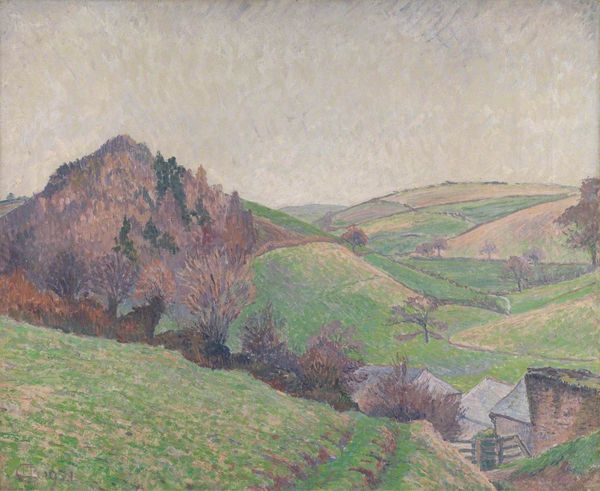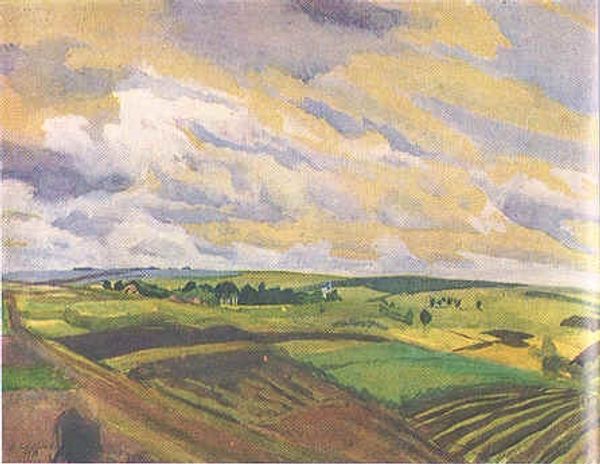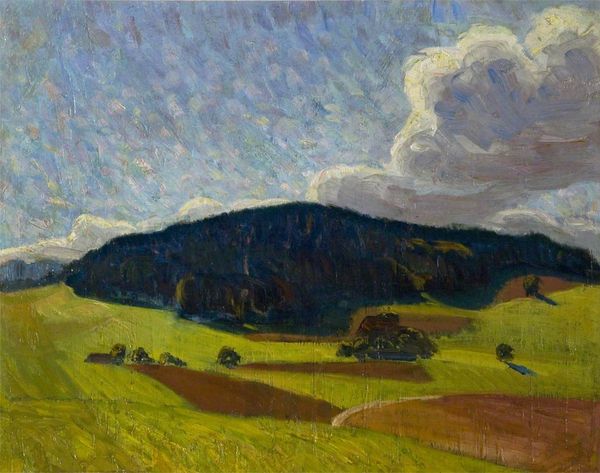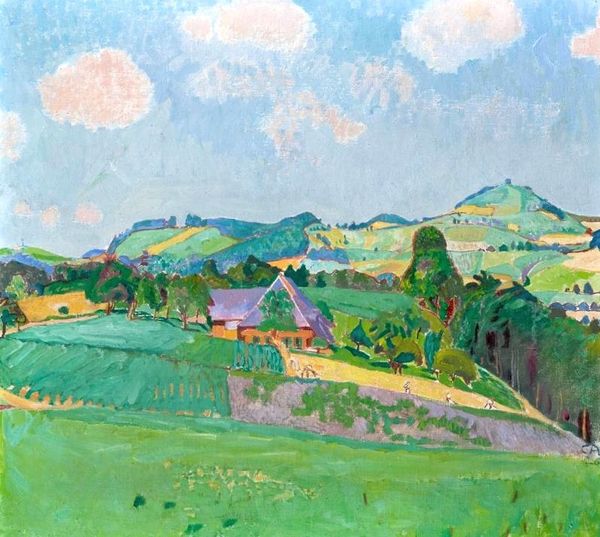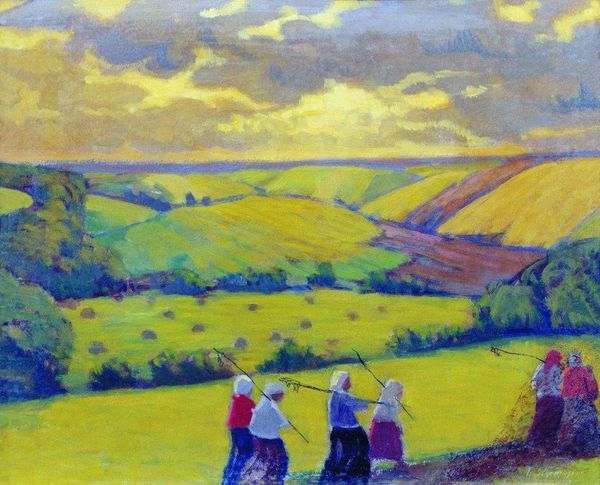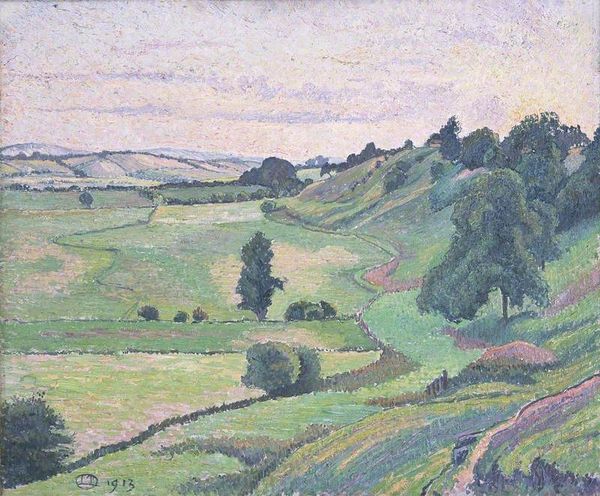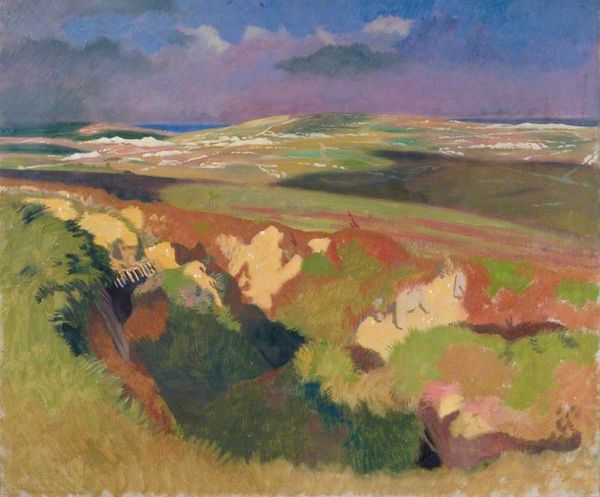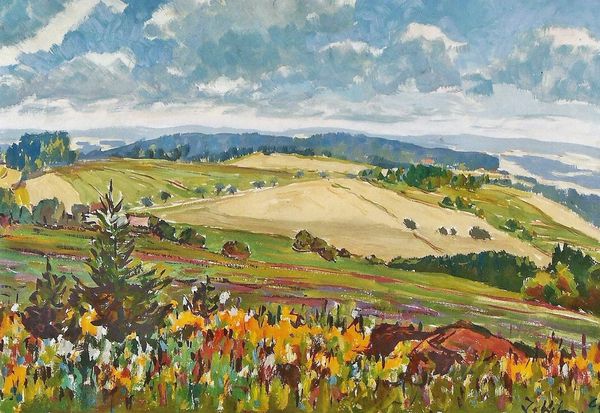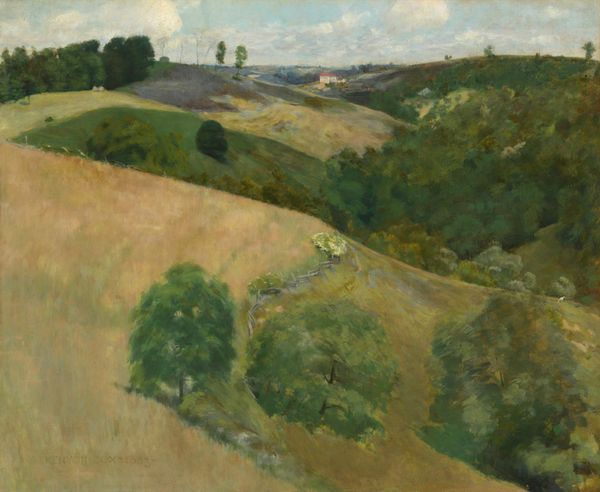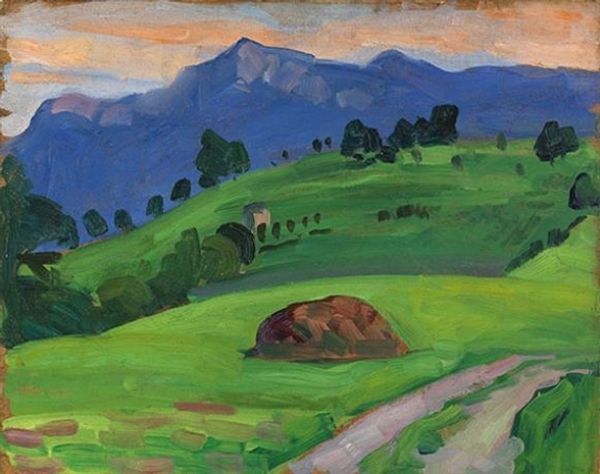
Copyright: Karpo Trokhymenko,Fair Use
Curator: Here we have Karpo Trokhymenko's 1925 oil painting, "Over the Big Road." A landscape depicting workers harvesting under a dramatic sky. My initial impression is the sheer saturation of yellow and gold tones. It creates an intensely warm atmosphere. Editor: It’s interesting to see the use of color here. How do you see that as it reflects on Ukrainian culture, specifically considering its historic agricultural output? Is this romantic idealization, or is there something deeper at play concerning labor and its portrayal? Curator: Trokhymenko focuses our attention on the rhythmic gestures of the workers in the field. Observe the thick application of paint. It really draws your eye to the surface, the materiality of the medium itself. How the pigment is manipulated is so important to consider alongside the figures represented, it transforms mundane field work into an interesting pattern, if not into poetry. Editor: And I read that use of color as being inherently linked to labor, class, and land ownership. How many hands toiled to cultivate what we see here, for whom, and under what social conditions? The romanticized portrayal of rural labor often masks deeper social inequities. Trokhymenko produced this painting just a few years before collectivization devastated Ukraine. Is there a foreshadowing here, or is that imposed in hindsight? Curator: It's compelling to interpret the painting as a kind of elegy, pre-empting impending hardship. What materials were available to Trokhymenko and how did these impact his compositions, for instance? Editor: Right. Because considering the materials alone provides insight into what resources were accessible within the socioeconomic circumstances surrounding his artistic practice. This pushes us to consider not just the “what” but also the “how” and the “why” of artistic production and the relationship to class identity. It’s hard to uncouple any reading of Ukrainian land from its role in cultural and political trauma. Curator: Thinking about this more broadly, I appreciate that, even through Trokhymenko's chosen aesthetic approach and media, we're prompted to contemplate complex social histories. Editor: Absolutely. The act of examining "Over the Big Road," opens an invitation to delve into dialogues about history, labor, and resilience—aspects far beyond its golden hues.
Comments
No comments
Be the first to comment and join the conversation on the ultimate creative platform.
